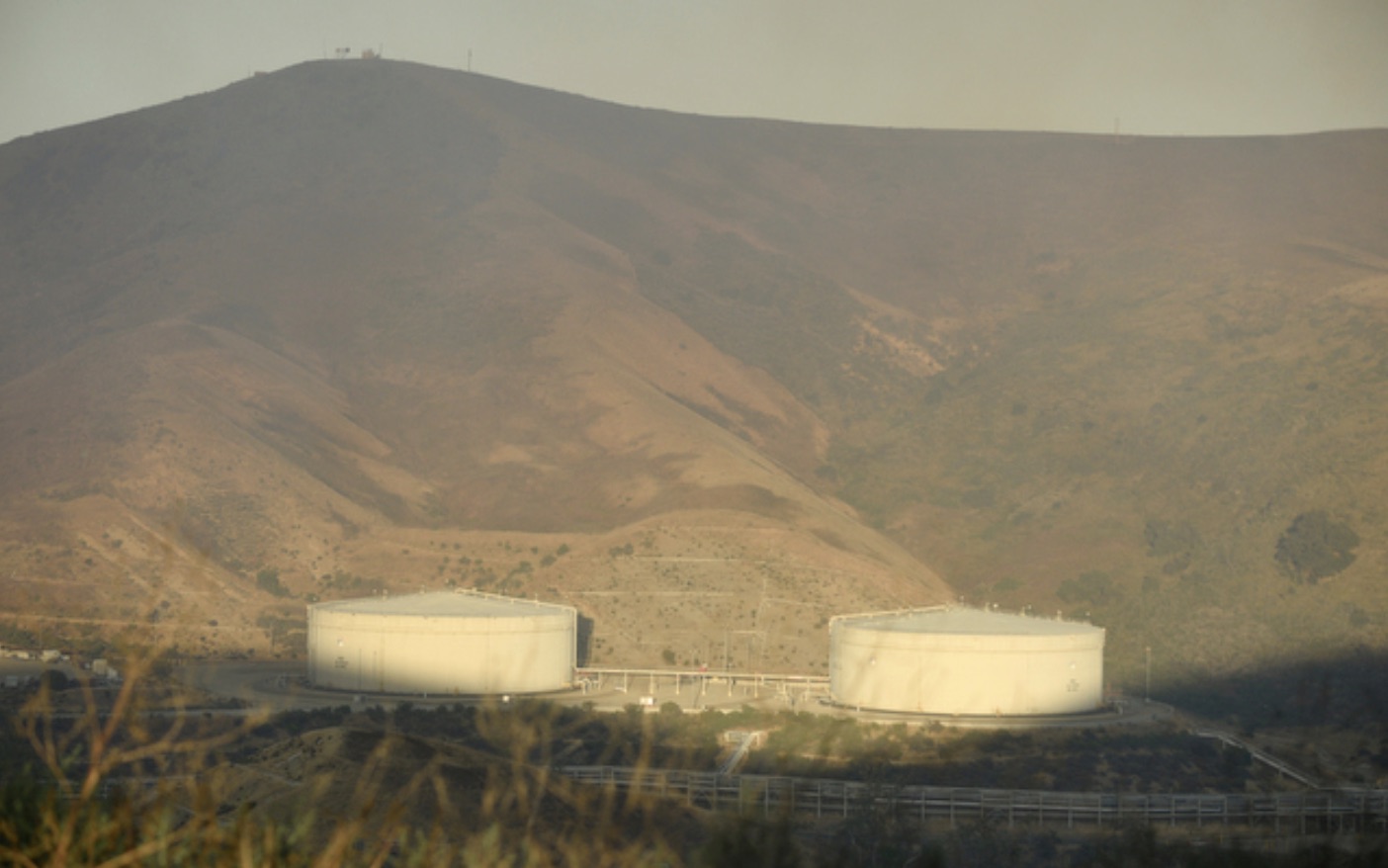One-Two Punch Hits ExxonMobil Trucking Plan
Phillips 66 Embraces Renewable Energy, Will Pull Plug on Oil

A one-two punch that very few people saw coming is now posing sudden, unexpected, and potentially unanswerable questions about the viability of ExxonMobil’s proposal to transport up to 70 truckloads of crude from its Las Flores Canyon facility on the Gaviota Coast to Phillips 66’s Santa Maria Pump Station outside of Santa Maria. Early the Thursday morning of August 13, Phillips announced its intention to shut down its oil refining operations at the company’s Rodeo refinery located outside San Francisco — the ultimate destination for ExxonMobil’s Las Flores crude — and repurpose that industrial facility into a refinery for fats, greases, soybean oils, and other renewable energy sources. According to a Phillips press release, the company hopes that production can begin as soon as 2024. The same statement reported the company’s intention to shut down the Santa Maria transfer facility, where the Las Flores crude was to have been transferred from trucks into Phillips’s Line 300 pipeline to the Rodeo facility. The Santa Maria facility is scheduled to be shut down in 2023.
“This is a very big deal,” said Errin Briggs, the chief energy planner for the County of Santa Barbara. “A very big, big, big deal.” Briggs said Phillips’s decision “pulled the carpet out from underneath us,” referring to both the County Energy Division and ExxonMobil. The county, he said, had no advance warning from Phillips 66. As to how surprised he said he was by the announcement, Briggs said, “Extremely.” As to how much warning ExxonMobil got, he added, “No warning.”
Phillips 66’s decision goes beyond ExxonMobil. When asked to assess how many other operators along the Gaviota Coast would be affected, Briggs said, “Pretty much every single one of them.” He said the Phillips facility in Santa Maria offers two modes of entry into the pipeline heading north to the Rodeo plant. First, it allows oil trucks to offload into the pipeline, and secondly, it offers oil operators a direct portal into the pipeline itself. He said three oil companies — Freeport-McMoRan, PCEC, and a Sentinel — will find themselves forced to find new accommodations for their oil. The quantity of oil affected is significant; it could be in the ballpark of many thousands barrels a day.
According to a draft environmental impact report on ExxonMobil’s trucking plans — strenuously opposed by a coalition of environmental organizations represented by the Environmental Defense Center — there is only one alternative site to the Santa Maria plant: the Pentland facility located in Maricopa in Kern County. The route to Pentland is a significantly longer drive, meaning the risk of spill is greater as is the quantity of greenhouse gases emitted. From Pentland, Santa Barbara’s oil could be pipelined wither north — to other refineries in the Bay Area — or south to refineries in the Los Angeles Basin.
Environmental critics of the trucking plan contend the route to Kern County along Highway 166 is even more fraught with peril than the Gaviota grade. Highway 166, they contend, is windy with steeper embankments and with a greater volume of pre-existing traffic. They are quick to point out that this March, an oil tanker jack-knifed on Highway 166 and its contents spilled out and into the Cuyama River. Briggs, however, insisted that the data shows the Highway 166 route is only marginally more risky.
On the very same day that Phillips 66 issued its announcement, Santa Barbara County energy planners had issued a report effectively removing the Pentland alternative from consideration. ExxonMobil had also agreed to its removal.
As Briggs sees it, that decision will most likely now be reconsidered.
Get the top stories in your inbox by signing up for our daily newsletter, Indy Today.
The trucking plan — no matter which route — is generating considerable opposition. A coalition of environmental organizations, including the Sierra Club, has already collected resolutions of opposition from the Santa Barbara, Goleta, Carpinteria, and San Luis Obispo city councils. In addition, the Goleta school district and water district have come out against the plan as well. Three years ago, ExxonMobil unveiled plans to restart its Las Flores operations — effectively shut down by the Plains All American pipeline rupture in May 2015 ago that led to a major blowout, resulting in the release of 3,400 barrels of crude oil and the contamination of coastal waters near Refugio State Beach. Plains has since been convicted on criminal felony charges by Santa Barbara County prosecutors and ordered to pay millions in fines and penalties.
That pipeline spill effectively accomplished what decades of environmental opposition failed to: the total shutdown of offshore oil platforms feeding into storage and treatment facilities along the Gaviota Coast.
A spokesperson for ExxonMobil said the company is still evaluating its options. Linda Krop, lead counsel for the Environmental Defense Center, expressed unabashed surprise at the sudden turn of events. “No one saw this coming,” she said.
Krop, like many in the environmental community, was surprised by the county staff report recommendation taking the Kern County option along highway 166 off the table. As for the Phillips decision to pursue renewable energy options, Krop suggested the company was responding to California’s legislative requirements when it comes to renewable energy production. Perhaps Phillips was attempting to get a jump on the renewable production market, she speculated.
Where Krop and Briggs disagree sharply on the environmental impacts of the trucking proposal, Briggs’s assessment of Phillips’s motivation dovetailed with Krop’s. Phillips, he said, is “attempting to diversify its overall energy portfolio by creating what is essentially a biofuel refinery.” Phillips, Briggs noted, has no ongoing relationship with ExxonMobil, so it wasn’t that surprising the oil giant was not given any advance warning. Santa Barbara, Briggs added, is located way downstream from its Bay Area refinery. In that context, Briggs said, it was “an afterthought” in Phillips’s new plans.
Krop and the environmental community have expressed discontent with the environmental impact report Briggs is prepared to prepared to approve for ExxonMobil’s trucking proposal, arguing it wasn’t strong enough. Environmentalists were especially upset the document left the door open to highway 166.
What ExxonMobil does next remains to be seen. It should be noted that even the county’s most recent recommendation does allow for some truck shipments to be made along highway 166 when no alternatives are allowed for extended periods of times, but in significantly reduced numbers. In these circumstances, the county will allow up to 35 trips a day. ExxonMobil’s plans — and environmental impact report — were scheduled to go before the county’s Planning Commission on September 2. After that, the decision to allow trucking or not would have fallen to the county supervisors.
Either way, the path forward for ExxonMobil just got a lot rougher and rockier; groups like the Sierra Club and SBCAN — among others — are girding themselves for a major fight. If they can stop ExxonMobil from trucking, they can effectively out the lights for a lot of offshore oil production.
Krop suggested the other option left to ExxonMobil to restart operations at Las Flores Canyon would be to wait for Plains All American to rebuild its ruptured pipeline. Plains is currently pursuing plans to do just that, and the environmental impact analysis — already several months overdue — is expected to be released sometime this fall. Plains’ approval process appears fraught as the proposed stretch of new pipeline crosses into the jurisdiction of three separate counties. In addition, the company will need to negotiate new deals with hundreds of private property owners over whose property it traverses. Not all owners are warmly disposed to the idea of the pipeline; others will want considerably more money than the company paid for its easement rights for the prior disabled pipeline.
This being oil, everything involved is, of course, somewhat slippery. The fine print of Phillips’s grand announcement regarding its plans to retrofit its San Francisco refinery to process renewable fuel contained the usual cautionary language that until all dotted lines have been signed, nothing is written in stone. If Phillips cannot obtain the necessary permits for its renewable plant in a timely basis or government policies change with regard to renewable fuels and greenhouse gas emissions, for example, it would have to reconsider its recent announcement.
Briggs confirmed that the Planning Commission hearings scheduled for September 2 and 9 to determine the adequacy of the environmental impact report and whether to approve the trucking proposal will now have to be rescheduled for a later date.
Editor’s Note: This story is an update of the version posted originally at 3 p.m. today.
Every day, the staff of the Santa Barbara Independent works hard to sort out truth from rumor and keep you informed of what’s happening across the entire Santa Barbara community. Now there’s a way to directly enable these efforts. Support the Independent by making a direct contribution or with a subscription to Indy+.



